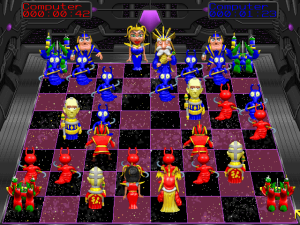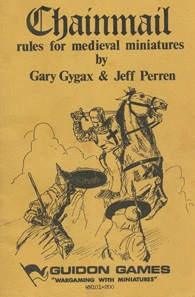An intro and a brief summary on the “Debate”
When one dedicates himself to the analysis of videogames (or, for that matter, to any academic discipline with a large deep enough background), it is usual to stumble sooner or later with the Big Debate. During its development, it was a relatively minor event that only affected its most enthusiast participants, but as it grew and broadened towards non-specialized discourse spaces, it has managed to become one of the medium’s most notable points of tension. The debate, of course, was the one related to find a specific answer on the nature of videogames: what are their most prominent elements? Which qualities make them distinct from other types of media, and most importantly, which are the ones that make the medium special and unique? The attempt to answer this question was the match that ignited many questions that today seem ahead of their time, considering how many of them have slipped to common parlance (for better or worse). Today, despite the fact that many of its original proponents have moved on and begun to focus on their own areas of expertise, a quite impressive body of work around the subject can still be accessed and explored.
Articles like those by Gonzalo Frasca, Markku Eskelinen or James Newman are quite reflective of this particular period of Game Studies, and recent debates bring it back again from time to time. Its persistence can be confusing now, since now newer and more malleable approaches to the nature of videogames are being proposed all the time, to the point that now it seems disingenous to claim for such an absolutist take on the myriad forms that gaming has developed over the years. And yet, some elements of the debate are still somewhat important to consider, since their perspectives have arisen some problematic concerns about we should view videogames.
Code Hero (Alex Peake, 2011)
On one hand, it is quite obvious that videogames as a whole are an offspring or possible outcome of computer software. This factor already makes their creative process quite unique, since while it is true that other media uses software for its own benefit, videogames depend on coding and computers to exist. As much as their output is visualized through pretty traditional means (screen, speakers etc…), their inner workings have depended on Object Oriented Programming practically since their inception. In a sense, this dependency has made videogames look closer to similar electronic items that have depended on self-processed operations to run effectively, like pinball or slot machines, and in that regard it can be quite obvious given the long-fruitful relationship between amusement centers and digital games. At the same time, however, digital games are also an integral component in the history of computers as a whole. Ever since the ENIAC presented itself to the British public by inviting it to play Chess, programmers and engineers have championed the idea that advances and improvements on information technology can be pushed through games design. Both in the case of amusement centers and personal computers, videogames have proven to be very useful tools to guarantee the existence and usefulness of those fields over the years (at least in the mass market). The most obvious consequence of this way of thinking gets represented on the somewhat common notion that videogames are, more than anything else, products that exist to be consumed and discarded for the next iteration. A quick look at the industry will more than demonstrate that this approach to the medium is firmly entrenched in the corporativist landscape of today’s industry.
On the other hand, there’s been numerous attemtps to broaden this deterministic approach to videogames, in both the entusiast press and the academy. In the case of many scholars discussed above, there has been a repeated claim to associate the newer medium of digital gaming with the more traditional field of traditional games, especially with board or card games. Experts argued this by claiming that, as all forms of play and gaming share similar qualities between themselves, it is only logical to assume that videogames should be defined by those shared traits. This approach also also helped these researchers to see themselves as a continuation of the researching process that philosophers like Johan Huizinga and Wittegenstein had begun at the first half of the 20th century. The results of this work are visible to this day, as the impressive amount of articles that suscribe to this ideology are quite abundant. And after all, why wouldn’t it be? The story of the medium is saturated with evidence that points towards that connection. Designers have attempted to simulate board games since the beginning, sport games are one of the most successful genres in the world, and the entire RPG genre, with its myriad of permutations and variations, started off as a simulation of tabletop games. If we consider this carefully, the only videgames that weren’t completely derived from already existing forms of gaming are interactive fiction, graphic adventures and some particular action games that depend on software. Even in those cases though, it wasn’t strange to see an arcade that directly took inspiration from an existing sport to represent its own rules.
Battle Chess 4000 (Interplay, 1992)
Given all this evidence towards that connection, it becomes clear why for so many years researchers have spent their lives trying to establish a unified theory that may link both fields once and for all. On the other hand, newer trends in both academic and vernacular circles are showing something of a U-turn in that regard. As some trends get standardized, it becomes evident that our notion of what videogames is expanding exponentially. Granted, some of these new proposals are still receiving some backlash today (especially in certain circles of the consumer audience that is better not to deal with), but if recent trends in both indie and AAA companies are showing anything is that, for the first time in quite a while, videogames have started to be considered not just in their mechanical or balancing beauty, but through many more facets. What’s even better, this hasn’t led to an exacerbation of the already too big inferiority complex that the medium faces. In terms of game design, these new venues have allowed for the exploration of smaller, minimalistic and more passive engagements, such as those used in games like Proteus, Glitchhikers or Timeframe. Not since the early days of 3D rendering, when the act of representing those worlds was in on itself rewarding for the users, or since the weird experimentation with FMV has there been so much renewed interest on how to engage games in other ways than those purely depended on mechanics or gratifying feedback. Not that this necessarily implies that finely tuned games are going to disappear anytime soon (as some of the already mentioned consumer circles seem to be so worried about), but at the very least, it means that our media landscape is only getting more interesting each by each year.
As it should be, academia has heavily reflected on these changes, and many scholars are wondering that, if it’s true that videogames can rely on something more than mechanics to be engaging, then how is it that “gameplay” has been so championed as the primary drive of their appeal. As of now, two mutually inclusive paths seem to be developing at the field: first, some historical framework is being unraveled to analyze when and how did videogames began to be appreciated only by their input schemes; at the same time, newer takes on the phenomenology and the models of haptic interaction of the medium are attempting to prove that videogames aren’t necesarily defined exclusively by tactile inmersion. Cyborg theory and similar models of haptic theory are being deployed today to widen the scope of game studies, and while it might still be too soon to talk about its outcomes, it is an interesting predicament that we’re on right now.
The question about “purity”
New Super Mario Bros Coin Adventure Board Game (Epoch, 2006)
With all that been said, there are still many elements from the now “classical” framework of game studies that resist falling into irrelevance today. Like I said before, one of the main claims that Aarseth and Eskelinen had at the time of their writing was that videogames should be recognized as an extension, or rather a newer form, of a much more extensive tradition of playful activities. By pointing out the main elements that characterized those older types of gaming (or, at the very least, as they were seen by Huizinga, Caillois or Sutton-Smith), Ludology came to the conclusion that videogames had to be differentiated from other, more passive forms of media if they were to ever fully reach their potential. By filling those with so much “useless” content (like the much maligned cutscenes), companies were just focusing on the wrong aspects of game design. A claim for a certain brand of “purity” of game design eventually began to take shape, and in ways that, as people like Chris Franklin have pointed out, seems pretty coincidental with the way that the industry was heading. Nevertheless, it was a claim openly asked where games were supposed to go. To put it in other way, it revealed an ideological and prescrptive conception around the role of play and games in society that was much broader than just videogames. Ever since Huizinga made his classical distinction between “serious” and playful activities, a movement for the dignification of the act of playing has been fostering around these ideologues, and some of them (especially Eric Zimmerman and Heather Chaplin) have been very vocal about the idea that play needs to be enthroned and championed for the new century. According to them, information and everyday life is becoming more and more “ludic” as times goes by (a claim itself that doesn’t fall too far away from what many post-modernist philosophers like Lyotard and Baudrillard had been saying decades ago), and with that “gamification” of society, a need to recognize the beauty and potential of playful activities needs to be put in front to properly understand how society will develop in the new century. This manifesto (and similar others) is both disruptive and assertive: it puts into question the way that we have traditionally envisioned media, information and even the way we perceive our daily existence, and furthermore, it calls for the need to recognize and structure the way that play and games can influence our very conceptualization of those same ideas. More immediately, it is a pretty obvious call to arms to recognize what games we should be campaigning for.
That part of the manifesto, however, is a lot more difficult to aspire to, not the least because play can be applied to so many things that even Sutton-Smith’s mammoth taxonomy recognizes to fall short to account for every single iteration of it. Arguably, it has been a lot easier to sketch a theoretical framework around which types of game design should be put above others, but if anything, those judgements are starting to fall short today, what with all the new shapings that the medium is experimenting with. Despite all of this, one question that remains is whether some forms of game design are “purer” than others. If one stays aroud enthusiast press for too long (be it Youtube, Polygon or what have you), it won’t take long to come across some article or video about “the perfect videogame” or about how certain design conventions could be considered “universal” or not. Sometimes, they are interesting musings that may say more about consumer preferences than anything else. Other times, they reveal a growing anxiety for the future of the medium as a whole. As such, entire channels are devoted to find samples of these “examples of good design” and, sometimes, trying to extrapolate them to every videogame. I won’t discuss the validity of their claims (since it is quite obvious that their analysis and theories are quite popular among certain audiences), but it’s interesting to note just how widespread these worries have become.
Deus Ex‘s famous example of “climbing mines” (Ion Storm, 2000) is pionered as one of the earliest examples of “pure” game design
Earlier examples of this preoccupation with “pure” game design abound, with Jesper Juul’s take on “emergent” game systems being one of the most noteworthy to this date. Eskelinen and Aarseth’s own statements can also be seen as cases of this look for purity. In the latter case, Aarseth puts in front one of my favorite examples, Chess, as an example of how a balanced system and refined rules are all games really need to be legitimite forms of “perfect” design. Since Chess and similar board games, he argues, are so focused on conveying the norms and proceedings of the game to players, and every piece of it is designed to highlight those rules, it becomes a stellar example on how to create a compelling system that doesn’t require any “fluff” or “hook” other than the appeal of the rules themselves. While many of them originated inside a particular cultural framework, their adaptability and ubiquity are taken as seminal examples on how games don’t really need to be studied inside a cultural framework to properly appreciate them. Of course, such an essentialist view of play and games has been mostly discarded by the academia, but when you start to count the number of critics and journalist that write how X game is perfect because of its minimalism or its clarity of desig, then you will notice that this is an argument that has many adepts among both consumers and designers (not surprisingly, Tetris seems to be a favorite among these pundits).
If we were tu summarize in a few words the ideological approach of these “purists,” it would probably look a little bit like this: since games as a whole (not just digital games, but all forms) are self-contained systems that can be studied in isolation, it stands to logic that we should look for those universal elements that may help us understand and define what games really are, as essential objects. Only through this lense will the promise of a truly “Ludic Century” will be fulfilled, since only then we’ll be able to apply the virtues of game design to improve our lives. Admitedly, it is a daunting and tantalizing proposition, and more than anything else, it’s kinda intoxicating in its romanticism and enthusiasm, which is a good reason to explain why so many people are enthralled by it.
However, there are, and in my opinion, should be other ways to understand games, ones that could took more into account their intersection with culture and is less worried about absolutisms. And fortunately, there has been a lot, and unlike what some people may think, it’s a lot older than some may think. Today, I want to show you the case of Chainmail, one of the very first products designed by Gary Gygax (the man behind Dungeons & Dragons) and also the progenitor of the whole tabletop RPG genre.
Chainmail (Guidon Games, 1971)
Chainmail was one of the many products that were released during the heyday of wargaming in the U.S., a hobbyist industry that never went too big but clearly became an inspiration for many other industries. At the time of its publishing, Chainmail was pionereed as a much required need in the hobby to properly systematize how medieval battles should be simulated on a board. However, what’s interesting to me is Gary Gygax and Jeff Perren’s very first paragraph:
“games based on warfare have interested men for centuries, as such games as checkers and chess prove. the latter games are nohing less than the warfare of the period in which they were developed, abstracted and stylized for play on a board. Chess is so abstracted that it is barely recognizable as a wargame. At the other end of the spectrum, and of much more modern invention, are military miniatures. By use of figures scaled down to an inch or two in size the player more realistically simulate warfare and are not tied to a stylized board…”
The observations and assumptions made here are, in my opinion, more radical and relevant now than they were at the time, because they explicitly present a completely opposed ideological mindset than the one proposed by Aarseth and others. In two and a half sentences, Gygax and Perren present a view of gaming as a filed to simulate and reproduce an existing cultural element. It is a view, therefore, that clearly situates games as a subset of culture, not as elements separated from it. To these designers, Chess and Checkers are less interesting precisely because of their “universality,” because they pretend to be nothing more than balanced systems. And, in a way, they also put into question the supposed “universality” of those systems, since after all, they cannot escape from the fact that they are a stylized form of medieval warfare. At this point, it can be perfectly argued that, just as some cultural practices become disengaged of their original locus and are transplanted to other frameworks, so has Chess, and wathever it was meant to be at its inception, these board games have managed to become their own thing after surviving for so many years in one form or another. Only that, if we were to argue that position, we could easily counterclaim that by saying that, just as some sports carry different meanings for different cultures, and sometimes they adapt themselves to fit those meanings, so have had these board games. And if that so, then where is that supposedly “universal” game that Ludologist claim exists? Where is that system that can be elevated to the point of disengaging it from any culture, even the one that saw its birth? Where is that supposed “purity” that so many consumers and writers evangelize for in their media? At this point, we should being to ask ourselves whether that “purity” is not actually a reflection of any “ideal” form of play, but rather what we consider to be “ideal” play in our culture.
Taking it back to the relationship between videogames and software, we should question if some of the most shining example of “pure” game design (like Tetris, Deus Ex and countless variations of Battle Chess) are just nothing more than representatives of a certain mindset about player emergency or replayability. The exploration and sense of wonder that comes from playing something like Myst or the more recent Elegy for a Dead World might respond to some concerns about how software can be exploited to generate the illusion of a real world inside the computer; on the other hand, Tetris and similar puzzle games can be portrayed as example of how computing processes and problem solving can make way to a certain aesthetic on the capacity to focus on a single activity; and games like Deus Ex and similar products can be taken as examples of a certain philosophy around player empowerment that is first and foremost concerned with giving users a sense of control and agency over the objects of the screen. This is not a radical or novel approach to videogames or play in general (Richard Bartle’s player taxonomy stands out, of course, but even Caillois’ categorization of ludic activities could be taken as a very early example of this), but it seems to be relevant to videogames today. As the medium expands and matures, questions about where it might be going are natural to arise. More problematic, of course, are those who not only try to provide some answers to these concerns, but then try to enforce them on every conversation around games. When Chainmail came out the first time, the wargaming scene saw an increase and split of its community between those that wanted to keep on playing and improving upon the old simulated battles and between those that wanted the new possibilities that tabletop RPGs seemed to offer. Nowadays, both industries are clearly differentiated, but they’re still very close to each other and, from time to time, they mutually influence one another. The crossing over of companies, hobbyists and distribution processes helps explain this intimate relationship, but the historical framework also needs to be considered if we ever want to make sense of why these bonds have been kept for so long.
It might be too soon to predict wether videogames are going to face a similar split between the ones that we played in our childhood and the ones that are being explored today. It might be that GeekNight’s predicted separation of the medium between “orthogames” and “ideogames” will become a reality at some point in the future. That doesn’t mean, of course, that these two venues of game design will stop influencing one another. To wish for such a thing in an industry that is still, despite the money and the sales, so comparatively small and localized, is basically foolish. And it would be a shame, since I honestly believe that these mixes and problematizations and insecurities are giving snob people like me plenty of things to talk about. And, if researches like the one made by Keogh seem to indicate something (or Henry Jenkin’s prediction on the convergence of media, for that matter), is that videogames are not going to remain isolated anymore, and that instead of isolating themselves into ever-smaller units, they’re going to become more and more related to other forms of “passive” media. As the old prejudices around the apparent inferiority of “moving images” or the inherent uniqueness of videogames begin to fall apart, writings like Zimmerman’s manifesto are only looking more dated by the moment. It might be true that, in one way or another, videogames will exert an enormous influence on the way we consume media and live life (if they’re not doing it already), but it probably won’t be at the expense of other media, and more to the point, it won’t be without them letting to be “infected” by the “unpure” elements of other cultural artifacts. If the case of Chainmail and Dungeons & Dragons can teach us something, is that maybe we need to let the videogames to be “culturalized” and pinned down to specifities, and stop worrying so much about “What Games Are.”




